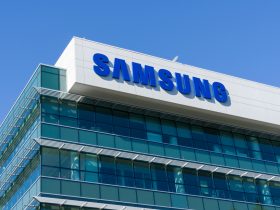Crossrail, London’s new and much anticipated east to west rail link, is billions over budget and behind schedule. When we hear that a major infrastructure project, or any kind of huge project more generally, has gone over budget and behind schedule, the first reaction most of us will most probably have is to shrug “these projects always do”.
And they do. The number of variables that can lead to delays and unanticipated expenses, which are often closely correlated, are so many in big engineering projects that there is probably more chance of budgets and timelines getting out of control than there is of them working out as planned. But engineering companies don’t win tenders by being negative. They win them by being ‘realistically positive’ and having a track record of not being too far out too often. And those choosing who to award those big contracts to know that is their best bet, without being under any illusions that there isn’t a fair chance whoever wins the tender won’t go over budget and schedule.
But some of the biggest tech companies in the world believe that the Augmented Reality (AR) technology they are developing could go a long way to improving productivity in major engineering projects. A lot of the mainstream media ‘buzz’ around AR is in relation to its use in entertainment – computer games and other kinds of AR-boosted ‘experiences’. And it will be common in that field. But those inside the AR industry, working for tech titans like Microsoft, Alphabet and Apple, are more excited about the potential for applying AR in industrial environment.
Ravi Kugananthan, chief engineer of Laing O’Rourke, the engineering giant building Crossrail, has been experimenting with Microsoft’s HoloLense AR headset. As described by The Times newspaper:
“With a prod or a wave of his hand, he recorded quality-control checks on structures and cladding at Liverpool Street’s new station. The data was automatically fed into Laing O’Rourke’s systems”.
“It saved us a lot of time.You could do a lot of surveys very quickly.”
And Microsoft, which is set to launch it new and improved HoloLense 2 headset later this month, believes that AR headsets and software will revolutionise engineering over future years by helping to alleviate the chronic shortfalls in productivity and skills. And they are not alone with giant tech competitors such as Apple chasing the same market – forecast to be worth £128 billion by 2023. Today the AR sector is worth around a tenth of that but its use is expected to mushroom with the next leap in headset technology and new software making the most of the hardware’s capacities.
Most of that is now expected to come from commercial, not entertainment, applications of AR. FTSE 100 defence giant BAE has been an early adopter and says using the HoloLense 1 has made their training of experts to do certain jobs 40% more efficient.
Paul Miller, an analyst at research firm Forrester, believes companies developing AR software and hardware have seen the gap in the market:
“The big play is first-line workers who are not sat at a computer, and, indeed, may never use a computer as part of their job. “Microsoft and others are saying, ‘Could something like augmented reality bring those computer-like capabilities to that person?’ ”
A major challenge still facing AR adoption rates is the cost of headsets. The HoloLense 2 is expected to retail at $3500, which will, like most US gadgetry, probably translate into a £3500 price tag in the UK. Even if rival kits can be cheaper, they are still very expensive in terms of the home entertainment market. But if they can genuinely help increase commercial productivity in a meaningful way, companies will invest.
That will be needed to keep the tech giants investing with the same enthusiasm and further improving the technology as well as bringing its price down. But don’t be surprised to see engineers with AR sets moving around construction sites and other commercial operations with increasing frequency over the next few years. AR will most likely make its mark in those settings before the latest HoloLense or Oculus model makes it to the top of Christmas wish lists as a home entertainment gadget.










Leave a Reply